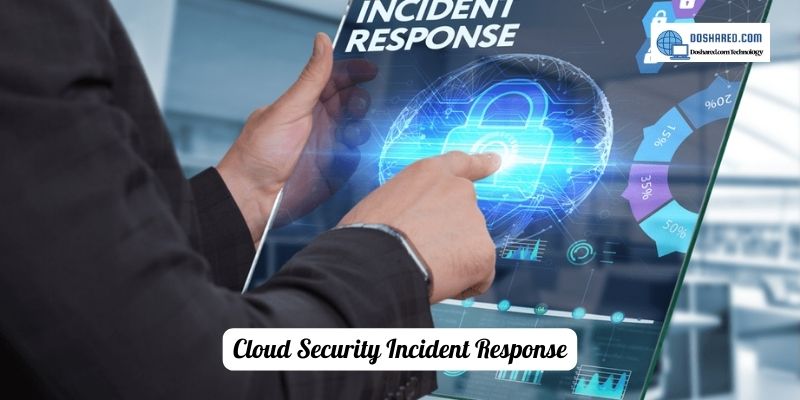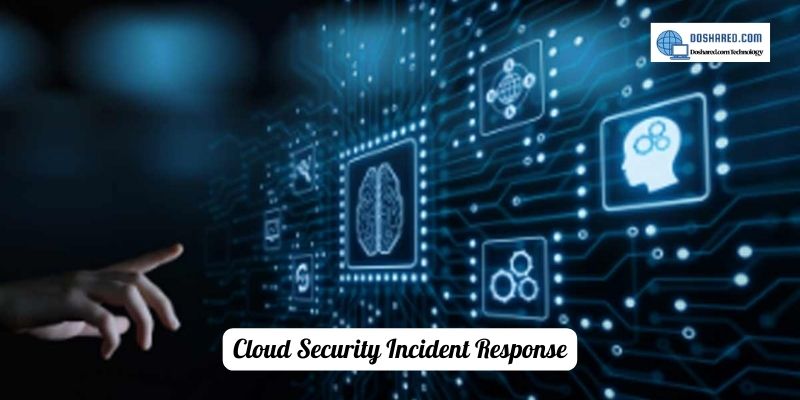Cloud Security Incident Response: 7 Best Steps Involved
Cloud Security Incident Response: Safeguarding data and infrastructure in cloud environments is of paramount importance in today’s interconnected world. In this article, Doshared.com explore the critical concept of cloud security incident response, examining the strategies, protocols, and best practices that organizations must employ to effectively detect, mitigate, and recover from security incidents in their cloud-based systems, ensuring the integrity and resilience of their digital assets.
Contents
What is Cloud Security Incident Response?

Cloud security incident response refers to the set of processes, procedures, and actions taken by organizations to effectively address and mitigate security incidents that occur in cloud computing environments. It involves the detection, analysis, containment, eradication, and recovery from security incidents to minimize the impact on cloud services, infrastructure, and data.
Cloud security incidents can include unauthorized access, data breaches, distributed denial-of-service (DDoS) attacks, malware infections, insider threats, and other security breaches. When such incidents occur, a well-defined cloud incident response plan is crucial to ensure a timely and effective response.
Benefits and challenges of cloud incident response

Building a cloud incident response operation has several advantages, especially as cloud installations continue to develop. Preparation is essential since the worst moment to decide how to react to an occurrence is right after it occurs. Teams will be able to react to security issues swiftly and efficiently if a solid cloud incident response strategy is in place, which results in the following:
- Preventing interruptions to business;
- Minimizing harm caused by events like data breaches;
- Recovering from incidents more quickly and successfully.
The following are the main difficulties in responding to cloud incidents:
- Lack of certain skill sets;
- Lack of knowledge about events unique to the cloud, such as API calls and data to process and analyze;
- Improper use of tools that offer a detailed view into cloud operations.
Cloud incident response vs. traditional incident response

In cloud installations, shared responsibility is used. This indicates that some cloud-based resources and services may be fully or partially managed by CSPs. Due to the lack of investigation capabilities and insight into events and indicators of compromise, incident response operations may not be launched if businesses encounter an intrusion in a SaaS cloud, for instance. However, in a more varied IaaS cloud, the client is essentially in charge of and responsible for various items and assets.
The fact that many of the security tools and controls teams use in on-premises data centers are not always the best fit for cloud settings is another difference. For instance, some won’t be compatible, while others will have performance or implementation issues. In order to contextually detect attacks and intrusion signs, other tools might not be adjusted to cloud API calls and cloud working models.
The fact that the entire cloud fabric is software-based is a third distinction. This involves putting a greater emphasis on employing cloud-native services as barriers and essential components of the incident response workflow, such as by concentrating mostly on automation and orchestration. The development of cloud logs and events, as well as cloud security services, may result in additional expenditures.
7 steps involved in Cloud Security Incident Response

Cloud security incident response refers to the process of addressing and mitigating security incidents that occur in cloud computing environments. When a security incident, such as a data breach, unauthorized access, or a malware attack, takes place in a cloud infrastructure or service, organizations need to have a well-defined incident response plan to effectively detect, analyze, contain, eradicate, and recover from the incident. Here are some key steps involved in cloud incident response:
Preparation:
Establishing a comprehensive incident response plan specific to cloud environments is crucial. This plan should outline roles and responsibilities, define communication channels, set escalation procedures, and identify the tools and technologies necessary for incident response.
Detection and Alerting:
Implementing robust monitoring and detection mechanisms is essential to identify security incidents promptly. This can involve leveraging security information and event management (SIEM) tools, intrusion detection systems (IDS), or cloud-native monitoring services.
Incident Analysis:
Once an incident is detected, it needs to be analyzed to understand the nature, scope, and impact of the breach. This may involve conducting forensic investigations, examining system logs, and analyzing network traffic to determine the root cause and extent of the incident.

Containment and Mitigation:
Taking immediate action to contain the incident and prevent further damage is critical. This may involve isolating affected systems, disabling compromised accounts, patching vulnerabilities, or implementing temporary access restrictions to limit the attacker’s reach.
Eradication and Recovery:
After containing the incident, the affected systems and data need to be thoroughly cleaned and restored to a secure state. This may involve removing malware, patching vulnerabilities, restoring data from backups, and ensuring that all security controls are properly configured.
Post-Incident Analysis:
Conducting a post-incident analysis helps organizations learn from the incident and improve their security posture. This involves identifying lessons learned, identifying gaps in security controls or processes, and implementing measures to prevent similar incidents in the future.
Communication and Reporting:
Throughout the incident response process, effective communication is essential. Stakeholders, including internal teams, management, customers, and regulatory authorities, should be kept informed about the incident, its impact, and the steps taken to mitigate and recover from it.
It requires a coordinated effort involving IT security teams, cloud service providers, and other relevant stakeholders. Regular testing, updating of incident response plans, and continuous improvement are essential to effectively address and respond to security incidents in cloud environments.
Conclusion
Cloud Incident Response: By implementing effective incident response strategies and following best practices, organizations can proactively mitigate risks and protect their cloud environments. With a strong focus on detection, response, and recovery, businesses can ensure the security and resilience of their data and infrastructure in the face of evolving threats.
Conclusion: So above is the Cloud Security Incident Response: 7 Best Steps Involved article. Hopefully with this article you can help you in life, always follow and read our good articles on the website: Doshared.com




